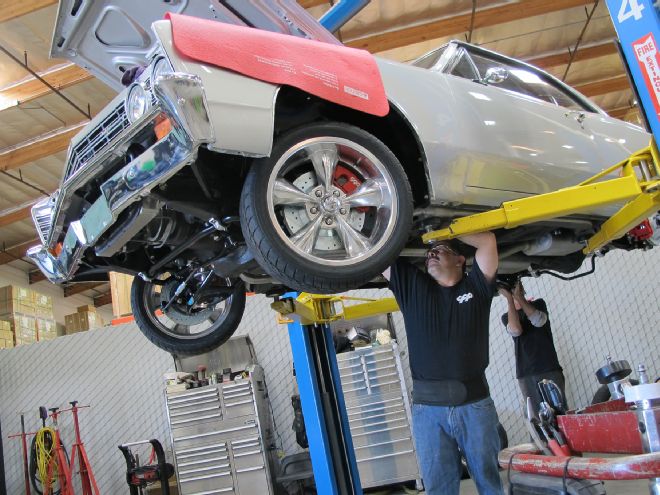
Old cars suck to drive. Now that I have your attention, let me explain. It’s not like they were awful to drive back when they were new in the 1960s, but compared to what we have today, the performance pales in comparison. After all, the suspension, steering, and braking technology from four decades ago didn’t lend itself to razor-sharp performance, or even spork-sharp performance. Add in the wear-and-tear factor and it’s amazing they handle and stop as well as they do.
Thanks to the aftermarket it’s easy to stuff modern performance into or classic Chevys (certainly easier than trying to give any modern car classically cool, good looks). Of course many of these options, aside from being very expensive, involve welders and cutoff wheels. But there are bolt-on solutions for those on more wallet-friendly budgets.
Included into the handling category are steering components. After all, even a car with a great handling package will be miserable to drive if it has vague, unresponsive steering.
For handling, we opted for Classic Performance Products’ (CPP) Stage-IV Pro-Touring kit (PN 6467PTK-4, $3,599). This system includes front and rear tubular control arms, billet single-adjustable coilover shocks, brakes, spindles, front and rear performance sway bars, and a host of other parts needed for the installation. The 1967 Chevelle we chose for this install was rolling on stock front disc and rear drum brakes, and its ability to stop was sketchy at best. Fortunately, the Stage-IV kit came with CPP’s Big-Brake system, which included rotors, calipers, C5 bearing hubs, C5 spindles, parking brake cables, brake lines, brackets, and everything else needed for a high-performance four-wheel disc brake system. To this we added a 500 series steering box (PN CP50004, $380) along with some fresh components to replace the worn out stuff.
Now, a big pile of new, shiny powdercoated parts is cool and all, but we wanted to see what the gain would be from such expenditure. And while these kits are pure bolt-on deals, there are a lot of parts, so we broke the install into two parts. And while our handling venue was closed to testing, we did manage to test out the before and after braking performance.
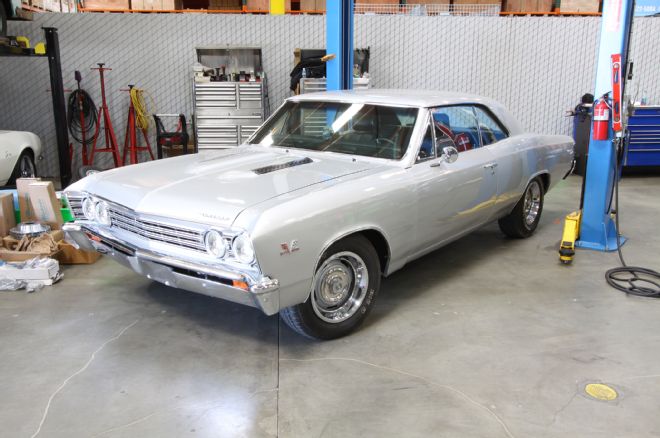
01. Prior to the install, we took our subject 1967 Chevelle and did some “before” brake testing and also got a feel for how it handled around town. The steering was vague and over-assisted, which was not a good combination. But it was the brakes that felt really bad. From 60-0 mph it took over 177 feet to come to a stop, and that was on the first try. After a couple of hard stops, the brakes went on vacation and we were into the 200-foot zone. Even worse is that the rear brakes would easily lock up, which made the car unstable. In fact, on the third try, the 3,700-pound Chevy almost spun around.
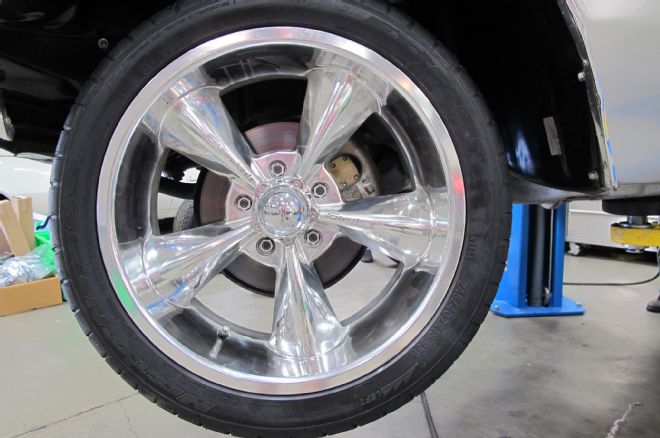
02. Our Chevelle ran 15-inch Rally wheels around its stock brakes. Unfortunately, those wheels were a “no-go” with the new bigger binders. Our solution was to pick up a set of affordable 18-inch polished Streeters by Show Wheels and wrap them in some fresh radial tires, which made the stock disc brakes look even more puny. In the interest of fairness, we retested the car with the better tires and there was an improvement in stopping distance (a best of 158 feet), but the Chevelle was still very unstable, and after a couple of hard hits the pedal was going to the floor.
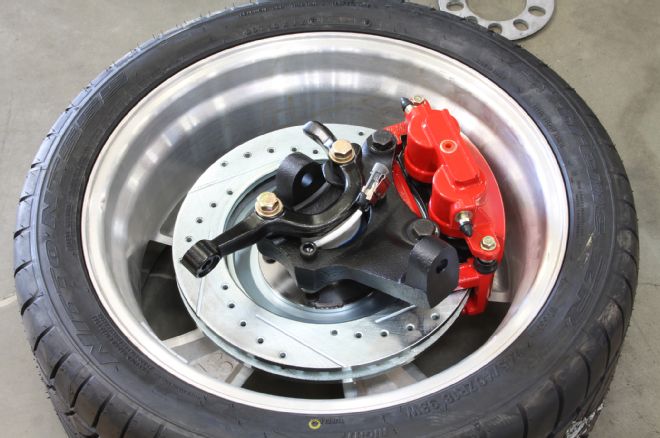
03. The new twin-piston calipers will be a huge leap forward from the old brakes and the zinc washed, drilled, and slotted rotors should work as good as they look. In the Pro Touring Stage-IV kit the spindle, bearing, and caliper come completely assembled and ready to bolt on. Before getting started, we checked the assembly to make sure the caliper cleared the wheel and found we needed a small 1/8-inch spacer. Note that the spindle steering arms are not included in the kit since you can use your stock arms. If you need them, CPP sells them (PN 6467SP-A) for $69 per pair.
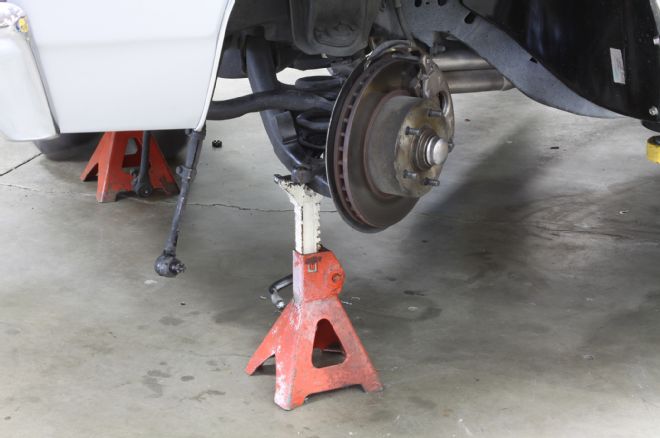
04. It was then time for the part we hate, namely removing the coil springs. We couldn’t get our spring compressor in place so we used a jack stand and the lift to slowly raise the car and relieve the tension on the coil springs. There are many ways to skin this feline, but just make sure to be careful since there’s a ton of stored energy in the compressed spring. Once the spring was gone, we went ahead and removed the stock control arms, sway bar, and worn steering bits.
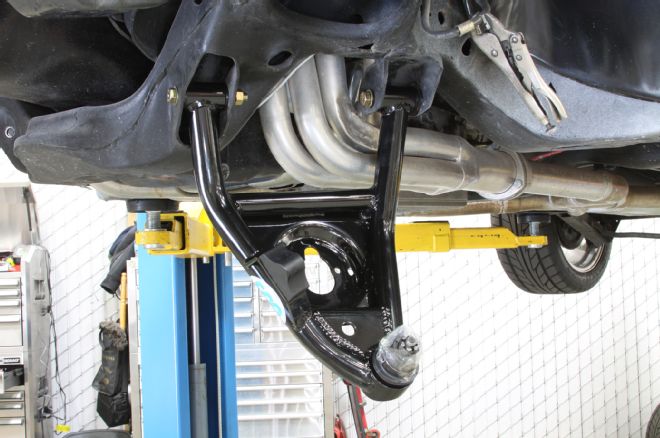
05. First to go on, with the supplied Grade 8 hardware, were the new tubular lower control arms. The TIG-welded arms came pre-assembled with new bushings and Moog ball joints. CPP designed the arms so that the same part will work for traditional-style coil springs as well as their coilover shocks. This is a nice feature for those who want to start with springs and upgrade later.
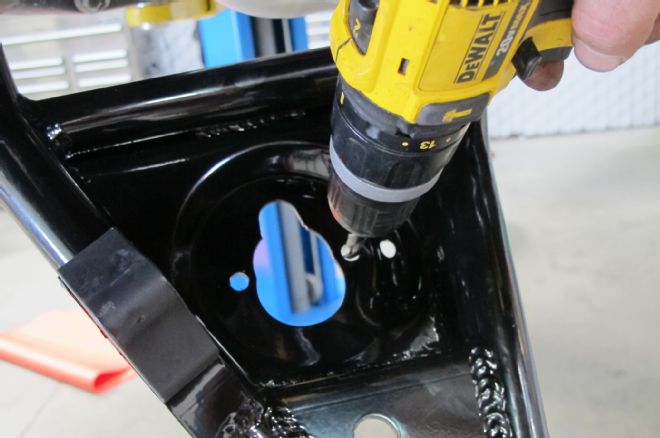
06. Our Stage-IV Pro-Touring kit came with coilover shocks. This meant we needed to open up the mounting holes just a touch to accommodate the larger fasteners.
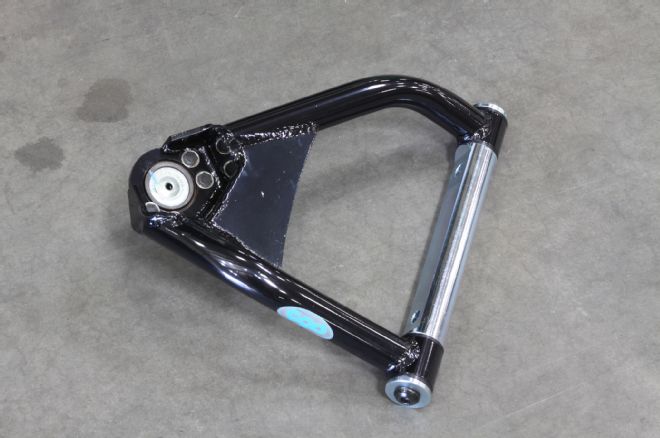
07. Yeah, they look good, but more importantly these new TIG-welded tubular control arms are considerably stronger than what GM put in the ’67 over 40 years ago. The arms are made from 1.25-inch 0.120 wall DOM tubing and have thick 1.5-inch 0.188 wall pivot barrels. This ensures the pivots stay true even under stress. They come preassembled on new billet chromoly 4130 cross-shafts and pivot sleeves. These sleeves capture both sides of the bushing, unlike the stockers that are only retained on one side. As a result, they’re much stronger and better resist flex. As a safety measure, they incorporate an interlocking shaft and sleeve design so that the bolts can’t work loose. The fact that they came with new ball joints already installed saved us time.
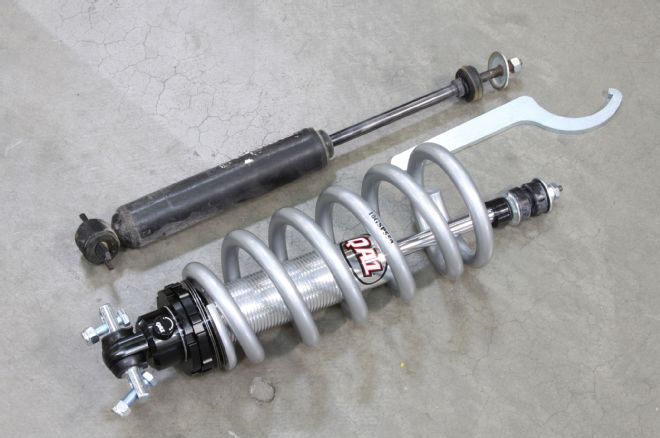
08. Here’s the single-adjustable coilover billet shock and 550-lb spring that came in the suspension kit. CPP gets their shocks from QA1, but they are valved to their specifications. Sure, it’s nice to be able to adjust ride height, but the real payoff is in being able to dial in the handling with just a turn of a knob.
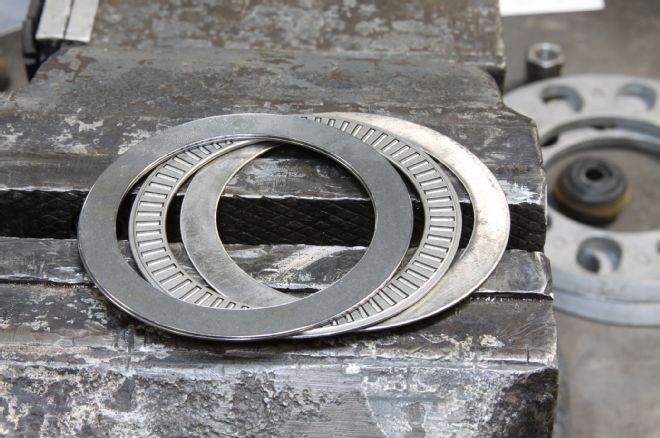
09. Trust us, that the extra cash for the Thrust Bearing Kit is money well spent since it makes future ride height adjustments much easier. You can by the thrust bearings separately (PN 4052-K) or, like we did, in a kit that included a spanner wrench (PN 7888-110, $49).
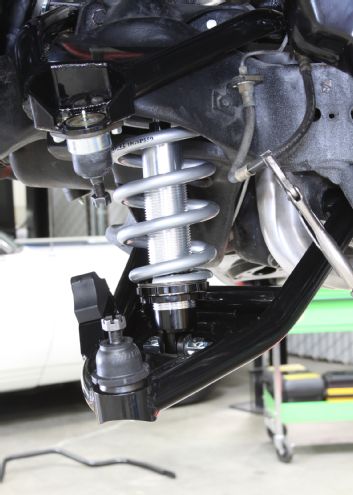
10. The new arms attached to the Chevelle frame in the same way that the old ones were. Once the upper and lower were in place, we slid the coilover and spring assembly into place and secured it with bushings and a shaft nut up top and two bolts through the crossbar at the bottom of the shock.
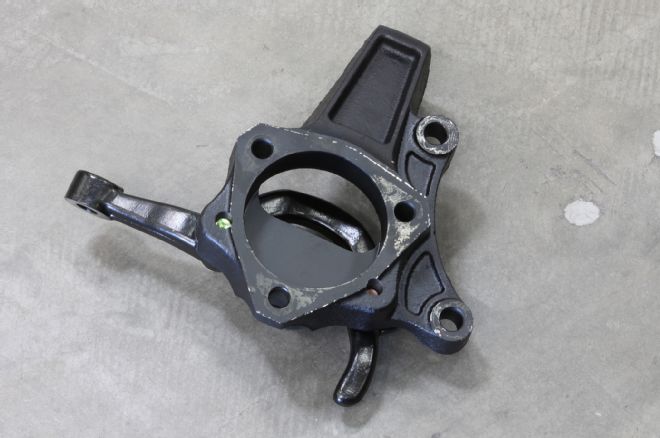
11. Our kit came with A/F/X-Body tall C5 spindles. According to CPP they have a raised upper ball joint mount for better camber change and they work with all of their tubular control arms (and even stock control arms if you want). They also utilize CPP replacement steering arms. But the two big items are that they work with any brakes designed to fit a C5 spindle (including easy-to-find and dirt cheap GM C5 take-off brakes) and that they accept 1997-’04 C5 Corvette hub bearing packs. No more packing wheel-bearing grease. They are cast iron and can be bought separately for just over $260 a pair.
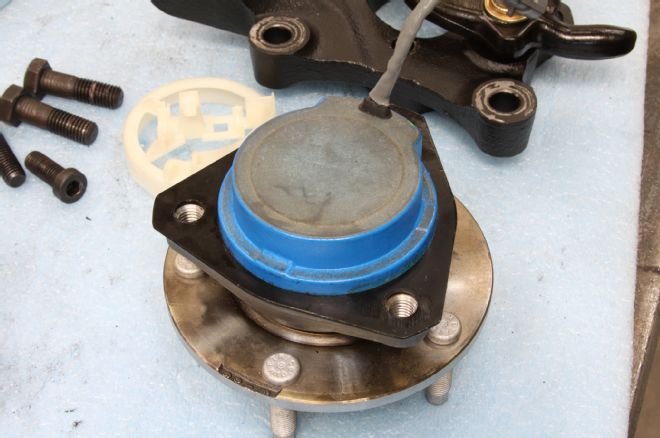
12. The kit also came with these C5-style bearing packs (PN 513139, $80 each). This is a modern sealed bearing that simply bolts to CPP’s new C5-style spindles. They don’t change the track width at all, and even have the ABS wheel-speed sensors if you want to try going that route.
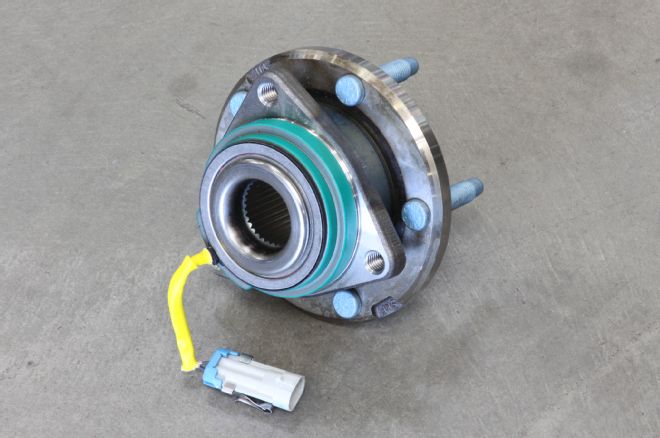
13. For cars that are going to be pushed hard (or extremely heavy cars), CPP recommends upgrading to their high-performance SKF hub bearings (PN BR930544, $858). These are a lot more robust and will better withstand side loading compared to the standard bearing packs. The upgrade cost is $429.
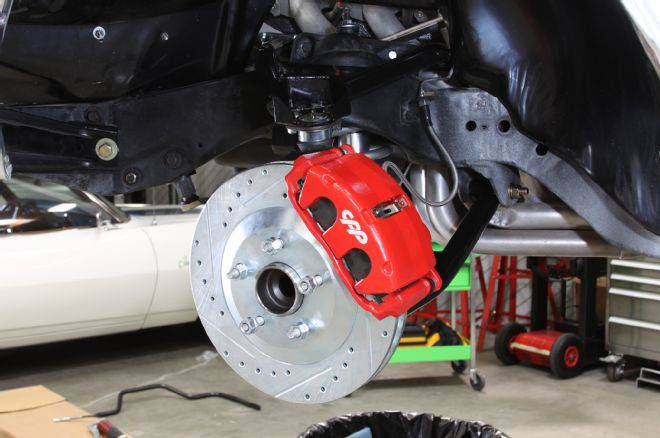
14. With the new control arms installed, the rest was crazy easy to do. The main reason for this was that the front spindle, hub, steering arm, and brake parts came completely pre-assembled from CPP. Even the brake pads were installed, and all we had to do was toss on the deal between the control arms and secure it in place with castle nuts and cotter pins.
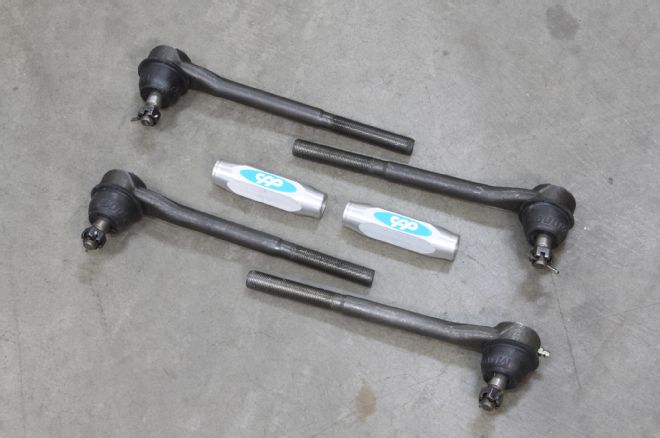
15. To maximize the gains from our new close-ratio steering box we also had CPP send over a new steering linkage kit (PN 6467SLK-CP, $199) along with a pair of their much-stronger tie rod sleeves (PN ES2032SP-A, $69). The linkage kit included inner and outer tie rods, pitman arm, idler arm, and centerlink.
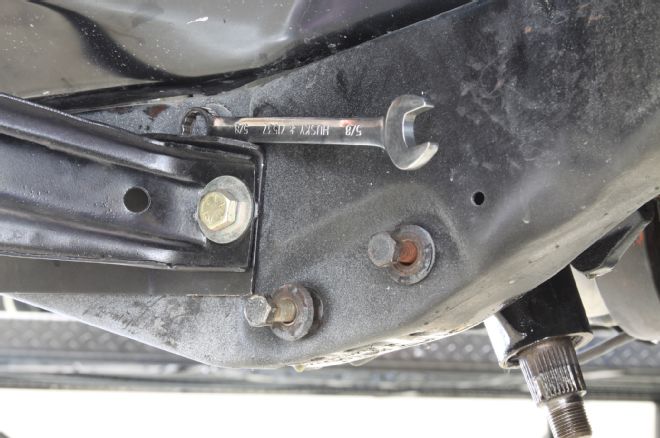
16. The Chevelle suffered from the same vague steering found in all ’60’s era GM cars. The first step in fixing this was to remove the stock steering box. After disconnecting the rag joint from the steering column we removed the three bolts that secured the box to the frame. We had to loosen the bumper bracket to gain access to the upper bolt.
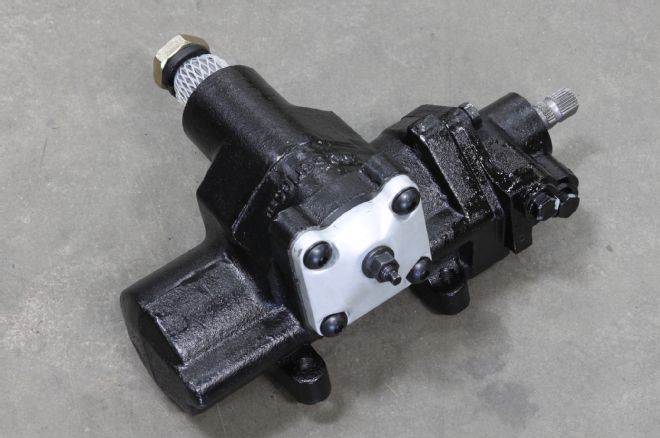
17. The replacement box was a CPP 14:1 close-ratio 500 box (PN CP50004, $379). Having good steering response is critical if you want to improve the handling and feel of an older Chevy and it’s one of the easiest upgrades you can do. The CPP kit came with an aluminum top cover.
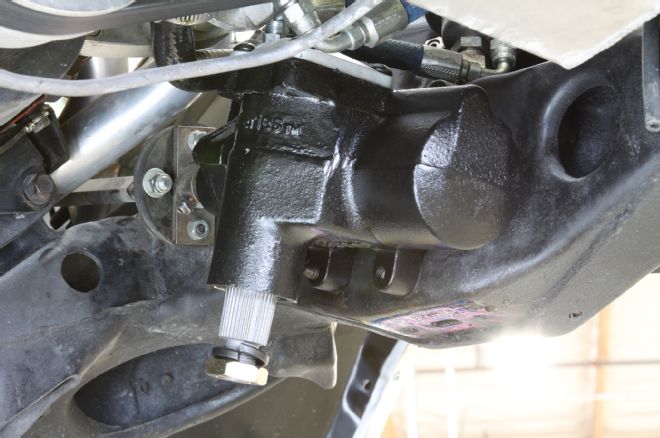
18. The new box simply bolted in place of the stocker using the same three frame bolts.
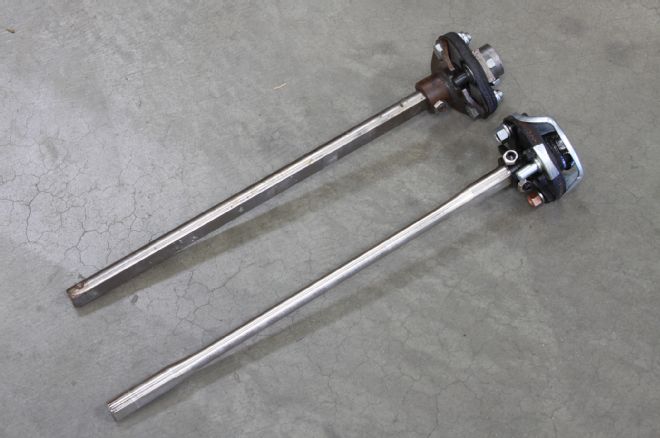
19. The headers on our big-block were pretty close to the factory steering shaft so we decided to gain a bit of room by using CPP’s Max Clearance nickel-plated power steering shaft (PN CPMAX-KN, $139), which included a coupler and a new rag joint.
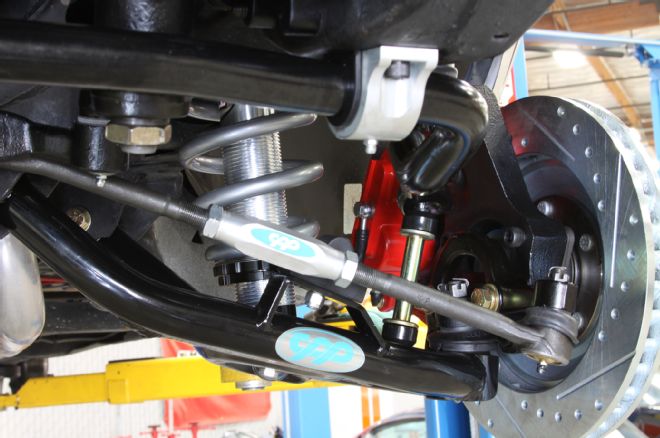
20. Here’s the completely assembled left front suspension system. You can also see the new 1.25-inch hollow sway bar that should help the Chevelle stay a bit flatter in the curves.
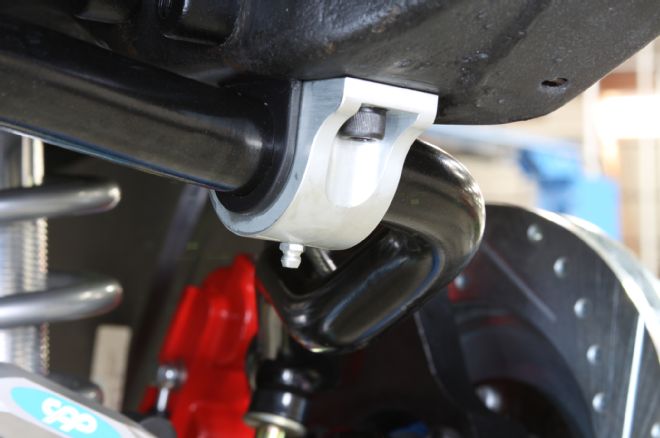
21. OK, these fell more into the “want” category than the “need” one, but they were just too nice not to use. The 2.5-inch aluminum sway bar mounts (PN FBM25-M285, $69) look great and are stronger than the stamped-steel versions.
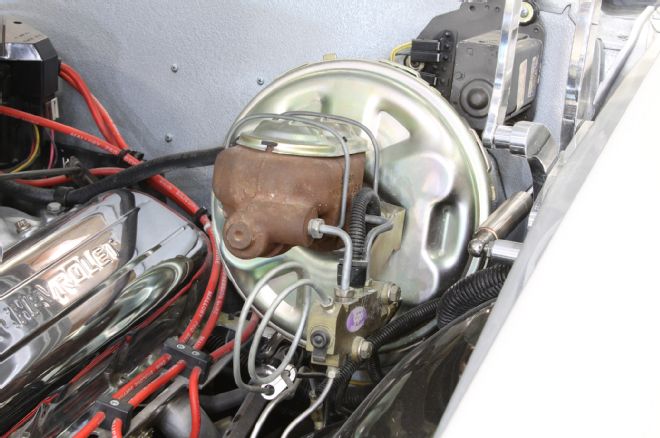
22. At some time in its past someone had upgraded the brakes on the Chevelle to CPP’s master cylinder, and while it worked, we had a better idea. First up was removing the master and brake booster unit.
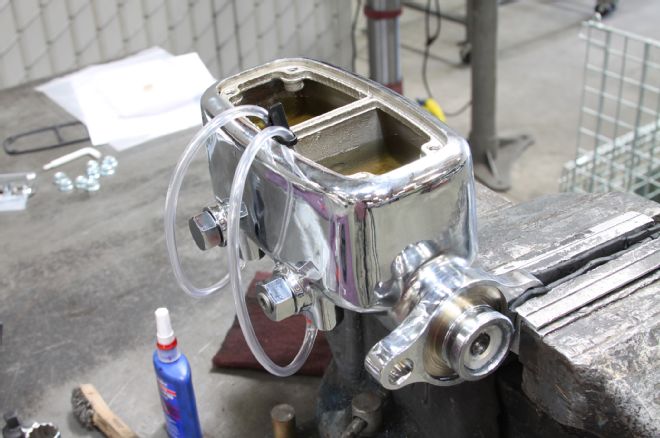
23. The Stage-IV kit came with CPP’s slick MCPV-1 master cylinder. Besides being all shiny and chrome, the 1-inch bore master had a built-in adjustable proportioning valve. Before installing we bench bled it with the kit supplied by CPP.
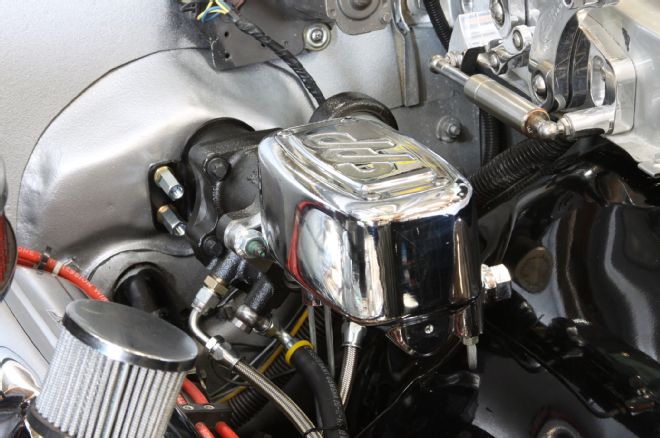
24. Hydraulic assist isn’t just for large diesel trucks any longer. These systems have long been used in OEM applications where engine vacuum isn’t a viable option of brake assist. CPP’s new Hydra Stop uses fluid pressure from the power steering system to offer braking assistance. We haven’t had much experience with these systems but after driving their Hydra Stop equipped test car, we were duly impressed and decided to give it a go. This is a great option for those with lumpy, vacuum lacking, engines. They come in a chromed-out version dubbed “Show Stopper” and the Street Beast version, which we went with. Ours normally runs $829 for the assembly, but since we only needed the booster (the MCPV master came with our kit) the up-charge was just $469.
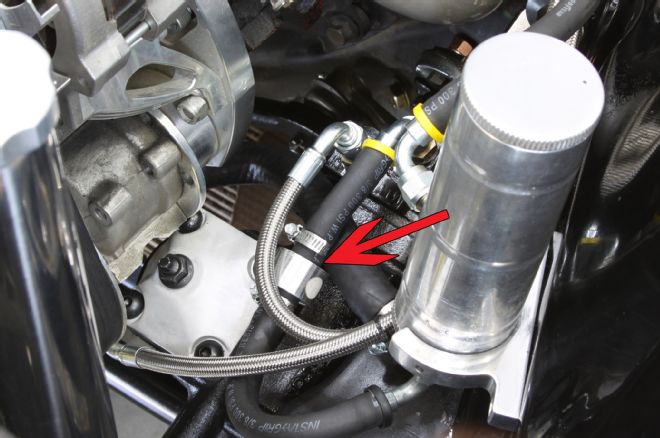
25. Since the Hydra Stop uses power steering fluid pressure, we had to rework our power steering hoses. We also added a small Magna Pure filter (red arrow) (PN 20-0038F, $20) after the Hydra Stop unit to make sure no contaminants would clog the unit. The plumbing was made easier with CPP’s stainless hydraulic brake assist hose kit (PN HAHK-S, $199).
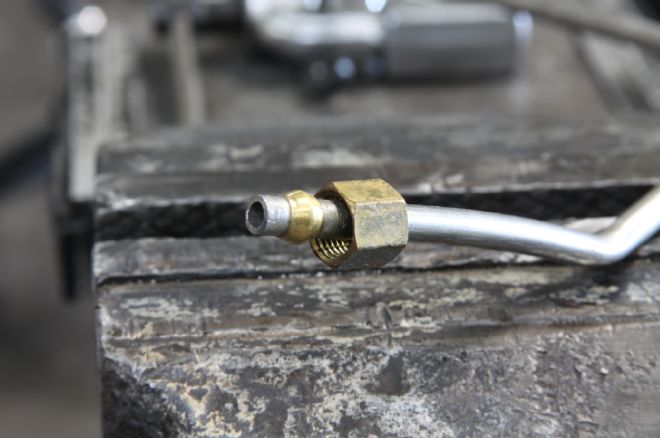
26. We found this while reworking the brake lines for the new master cylinder. Looks like the auto parts store was closed, but Home Depot was open. Yep, that’s a compression fitting (like you would use on your refrigerator’s ice maker) on the main line to the rear brakes. Forget double flare, this wasn’t even single flare. We’re amazed it didn’t leak, and we were glad it didn’t let go during brake testing. Moral of the story? When you buy an old car look it over for “Bubba” engineering like this.
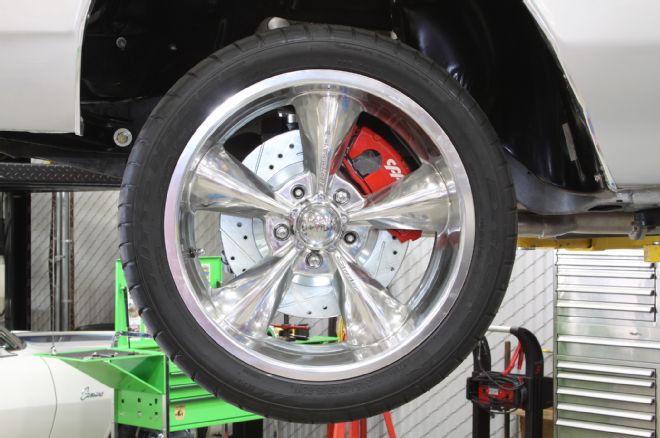
27. And after a long day, we were done with the front of our Chevelle. Next up will be getting the rear system up to date. One thing is for sure; the larger brakes sure look better behind the new wheels. Once the full install is completed, we’ll test the system to reveal the improvements.